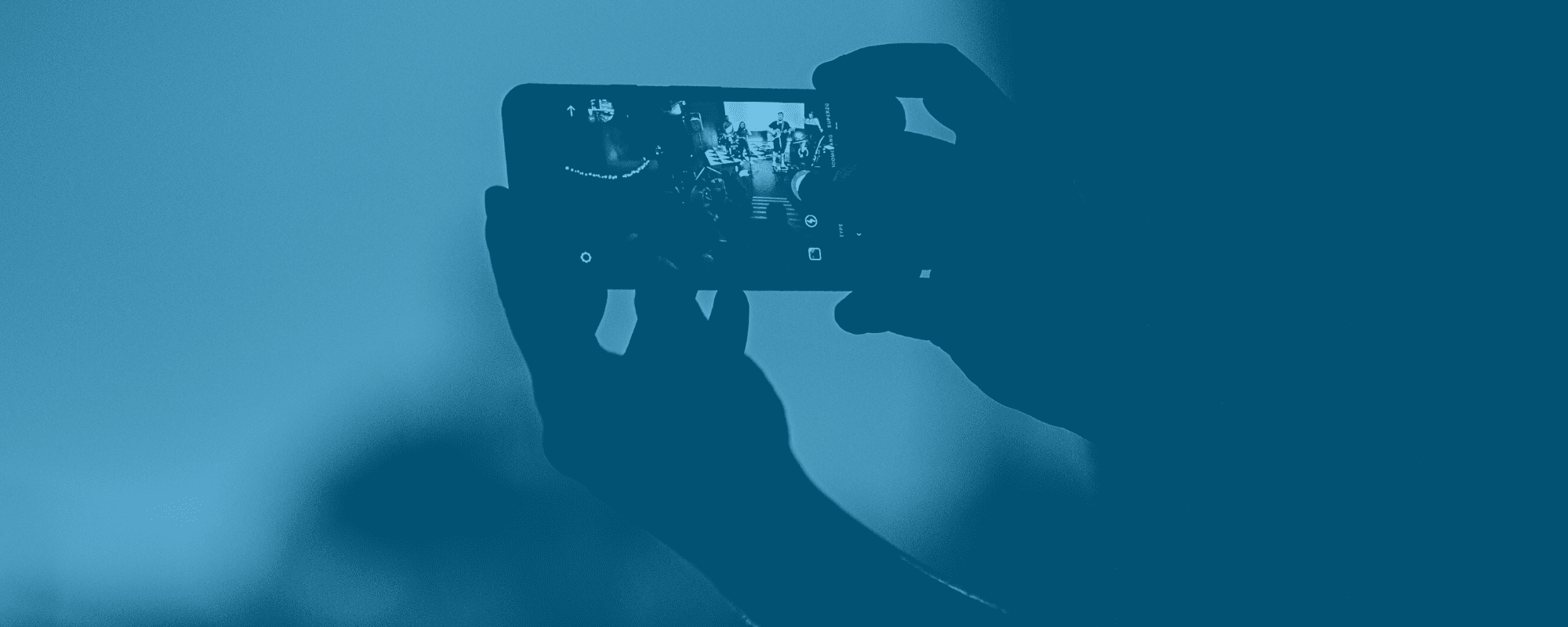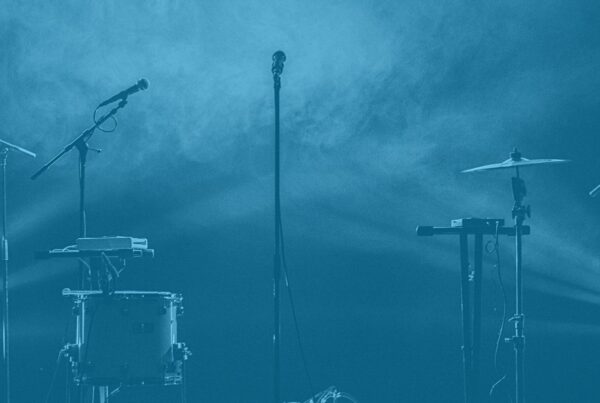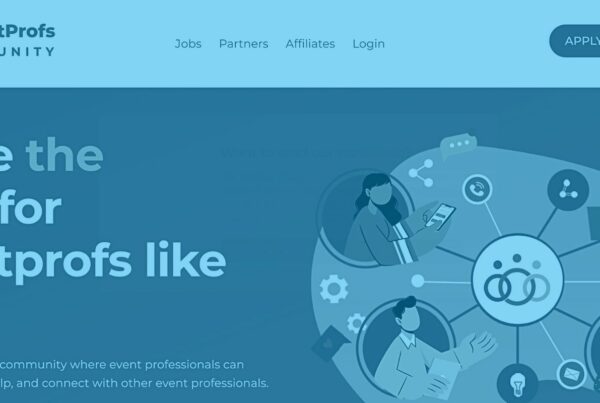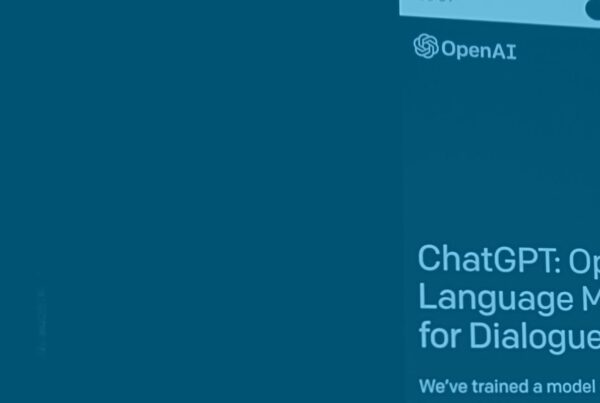Live streaming for events is something we’ve covered before. And today, we’re revisiting this amazing topic. Except this time, we’re getting even more tactical, with a handful of amazing tips. These are brought to you by one of the best in the industry, where live streaming for events is concerned. It’s gonna be a wild and educational ride!
So, joining our amazing host Will Curran is Scott Mirkin. Scott is the co-founder of ESM Productions, and when we say he’s one of the best, we’re not exaggerating! Because he has done work for some of the most powerful people in the world. And these people include none other than hip-hop mogul Jay-Z, President Obama, and Pope Francis. Are you excited yet? Then press play, because this is an episode you don’t want to miss!
Click here for the full audio transcription.
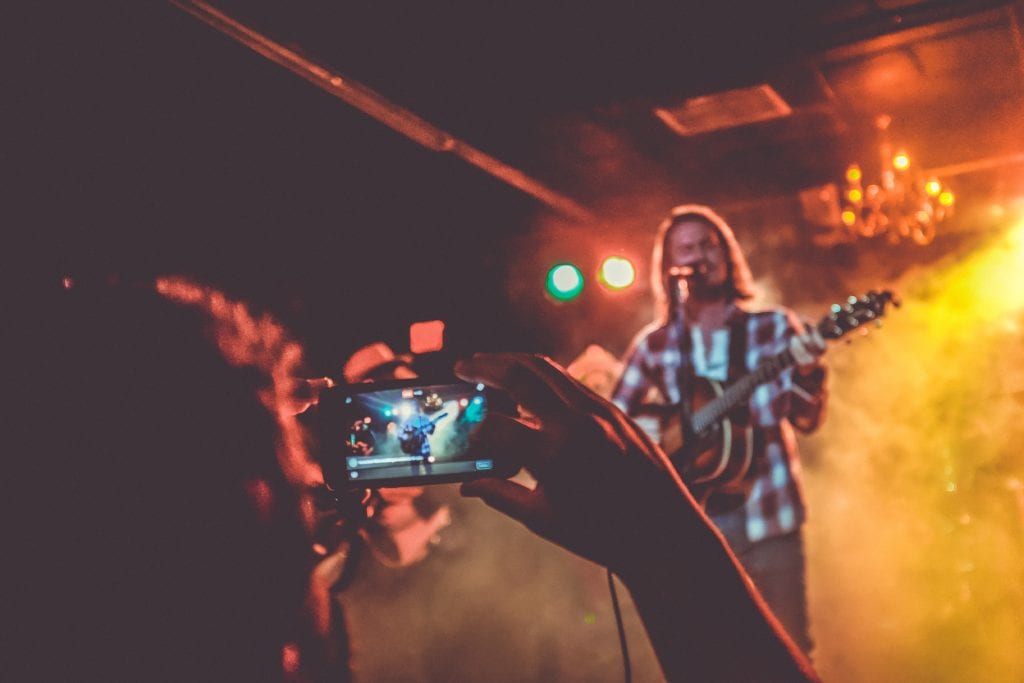 An Insane Scale Of Live Streaming For Events
An Insane Scale Of Live Streaming For Events
Looking back at the most stressful live stream he’s ever done, Scott recalls the one for Pope Francis’ visit to the United States. “I think the pressure was on, pretty much there”, he says. “But that happens every day, on every live event. I think that’s part of why those of us who do live events and live broadcasts, and live streams, that’s why we do it. It’s very different than filmmakers, who have a completely other amazing talent and art form. But they also have weeks, months, years to perfect. We have a thirtieth of a second, if we’re lucky, to perfect”.
Will is curious to learn what everyone should know about live streaming for such a large audience. “Transmission is really the most important part of getting the feed out there to the world in different flavors of profiles”, Scott explains. “And encodes, and regional distribution, all those things. So eliminating as many or all single points of failure in the signal flow and the transmission is really important. And that manifests itself on a big show like we were describing. Multiple satellite up-link facilities. Multiple broadcast fiber. And multiple IP encode”.
A Little Bit Of Everything
“So it leaves the site, whether it be the stage we built in Philadelphia for the Pope, whether it be the Barclays Center for Title’s Rock the Vote show, or any of those things, it’s a television show that could be on any linear television network on the planet, if it wanted to be”, explains Scott. “But instead, what we do, sometimes we do both. So it’s the point of encoding, it’s the place where we take all that and encode it for all the different profiles in the mobile space, and the desktop space, and the tablet space. And then it gets inserted into whatever player”.
“And then the most important part about that for a larger audience, once all that’s happening, and those are redundant paths all the way through. The CDN, the content delivery network, Akamai being one of the largest on the planet”, he adds.
Television VS Live Streaming
Scott has a background in television. When Will asks whether he considers these worlds to be different or similar, Scott says that “there’s not much of a difference at all, quite honestly. Especially, we do a lot in the music space. And on the music side we shoot about 100 concerts a year, and the average, just to give you a sense what things look like and what that complement looks like. It’s about 40 to 50 people, full crew”.
It Takes A Village With Live Streaming For Events
A Day In The Life
How do teams work in live streaming? “So first thing in the morning we do something called park and power”, Scott explains. “There are utility positions that are both on the video side and on the audio side, that follow about a 45-page technical specification, tech-spec as we call it. And most of what we’re doing is mobile, so there are trucks. So you’re going to have your A unit broadcast truck, which is going to have your cameras, all your camera controls, switcher, production audio, record, playback, all those things. Production, that’s the backbench where I sit and look at all the monitors and all that kind of stuff”.
“Then you have a B unit that has all the maintenance and camera lensing and cabling, and all those kinds of things. We also bring redundant power”, he continues”. “Like the entertainment quiet generators, that one of the motors can completely shut down and still the load continues, so they have a very high success rate. And the reason we do that, even if it’s a place that has solid power is that if a show loses power on stage, it’s happened, we’ve all been to concerts where that happens. If the truck were to lose power, the broadcast loses power, it can take like 15 minutes for everything to come back up. So you really don’t want to have that happen. So having clean, redundant power, separate from anything else that’s happening is really important”.
Live Streaming Music Events
“For music, also, in addition to our production audio that’s in the production truck, often there’s a separate mix facility”, says Scott. “So some of these artists are 48 or 96 channels. And something that some folks know and some folks don’t know, the mix for broadcast is a very different mix than the front of house mix”.
“The other thing that’s really, really important, it goes back to the engagement side, it goes back to the creative, and I think it’s more and more all the time, is that on a live show the audience is, whatever you want to say, the fifth member of the band”, he continues. So the way we mic the audience is pretty specific. And how that’s mixed is important. And how all the rest of it is mixed is really, really important. So we have all that going on that basically gets mixed down into, depending on the nature of the broadcast, it gets mixed down into either a surround 5.1 or gets mixed down into stereo at the production mix”.
That’s Not All!
It really does take a village to make live streaming for events turn out to be a success! In addition to what he already talked about, Scott adds “there are people running cables, the utility team is running cables. And not just running cables, but patching them. Really it’s pretty specific on where they’re going and how they’re patched and what they’re plugging into, how that’s being configured. Another really, really, really important element to a live show like this is the communications, the comms. So the intercom configuration is complex. There are many, many channels, and in the truck, there are all sorts of ways for the director and myself to talk to whoever we need to and not hear who we don’t need to hear. All of that. And that’s a task amongst itself, it takes a fair amount of time, and some pretty skilled folks”.”
“So then you’ve got cameras. For the average music show it’s somewhere between eight and 12 cameras”, he continues. “There are typically at least two cameras on or near the front of house position, sometimes three, depending on the nature of who’s on stage. So you always have a wide and a tight and a two-shot that you can work with. We run, typically, another two or three cameras on stage that can be reversed, and they’re often on tripods, but can come off and be hand-held as well, depending on the band”.
“And you can see the crowd jamming and cheering, those are reverses as we call it. And then we very rarely do a show that does not have a Steadicam. They have Steadicams all over the place, it’s usually on stage and then down in the moat, or the barricade line, right there at the pit”.
Executive Producing
“I am responsible for the final product”, Scott explains. “So I spend a lot of time staring at the monitor. And I may give my director some notes, a quick little, “Hey, let’s do this. More of this, less of that. Get that idiot out of my shot that’s on the phone.” Stuff like that. And also I’m there too, if we hit any kind of turbulence I’m there to make the decisions, of what we’re going to do to stabilize. I call it turbulence but that could be any number of things.”
And so being able to communicate and deal with whatever changes might happen”; he continues. “And make decisions, content on-air decisions. If there’s a problem, how to take command of the situation so that you can make sure that folks are dealing with it and getting reports. Mostly, though, it’s overseeing and loving, which is what I do. Making sure I love what we’re sending to the audience”.
Underrated Positions
“The video shader is… If you’re in the business, everyone knows that’s a major, major position. In the business meaning behind the scenes like we are. We try never to find ourselves in this situation, where we’re sitting with a planner or a corporate client, going down the list of crew, and then the person goes, “What’s a shader? Will we really need that? Can’t we just set the lights right?” And then you have to try to explain to them, “These are all the things that we do that makes it look like we’re not doing anything.” So the shader is a super-important position”.
“Again, mostly on the music side, but really on any side, often we’re not producing the actual show”, continues Scott. “We’re really producing just the broadcast. So we still have a stage manager position, and that stage manager is really a delegate and a diplomat to the production stage, or whoever’s running the concert, or whoever. We just need to know what’s going on, and we can coordinate. So that’s an extremely invaluable position”.
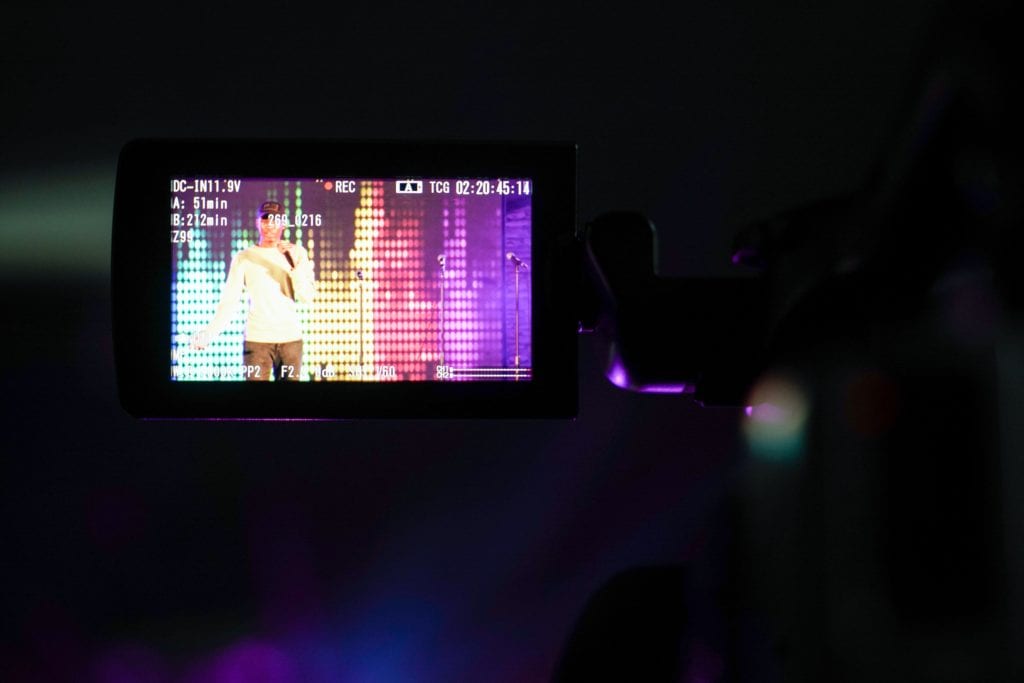 Understanding The Process
Understanding The Process
Will is curious to know what are the things people try to get rid of in live streaming for events bus absolutely shouldn’t. “So I think what often happens is, like most of us in this industry, we all probably put our time in good old AV. Corporate AV. And that’s where I started. And probably had some of the most valuable training I could have ever had. I’m going back several years, early 90s, late 80s. So the technology was different. It took two hours and somebody who really knew what the heck they were doing to get a video projector to even look half decent. Now it takes 15 minutes and the thing looks amazing, right?”.
“It’s hard to defend components”, Scott adds. “But some of the common things that you see would be, let’s say it’s a panel discussion of three people. I’d still shoot that with four or five cameras. Because you have an audience, too. And often a person might be thinking more about video conference, like, “Hey, I just did a Skype last night on my phone and blah, blah, blah, what do you need all this for?”.
Live Streaming For Events: Fighting For The Best
“So our mission, typically, on these things is, we are trying to create and amplify what the audience in the venue is experiencing. And they’re not looking at it through a roll of toilet paper, right to the person who’s talking, like one camera would look like. They’re looking at it in a much more sensory perception type of way. And so when people start crossing out cameras, I get angry. Not angry, I get annoyed. Same thing with audio”.
“What we try to do, most of the time, and I think it has to do with the maturity, the age, of our company, or whatever”, Scott continues. “We ask those questions, we try, we’ve got to ask them early and try to figure out if this is the right engagement for us. And one of the things that we did from day one and still do is if a client doesn’t see the value in what we do, we going to try to figure out how to not have them be a client. And it’s a very hard thing when you’re just starting, and you’re trying to bring revenue in, put points on the board, or whatever. But it’s really, really important, that”.
“Because if you went in there and you didn’t win that argument, and you went in there and you pointed all your cameras at a dark stage, or a badly lit stage, which is worse. Where it’s just everybody’s all blown out, it’s worse than dark. And then the big boss is watching the stream, and he goes, “This stream sucks! Who did this?” Our name’s on it, and so we are responsible, so we always want to… we sometimes say, “We can’t come into any of these things with one hand tied behind our back.” And I always try to give that advice to anyone, whether it be in our company or anyone who’s ever asked. And so that’s an important thing. You’ve got to do what’s right so that. I also call it the circle of responsibility”.
The Layers Of Redundancy
We’ve already gone through the power redundancy required in live-streaming for events. But let’s dive a little deeper! “Power’s obviously the big one. And if you think about it that’s the beginning of the chain. We’ve got to plug the stuff into the wall if you will. And so how many plugs run into the wall and how that’s being powered, eliminates any single point of failure. So there’s no single point of failure any longer in the power. Now, of course, you could have a double point of failure, and then you’re going to have some challenges, but the risk mitigation is well within the parameters to do it that way”.
“And then the other big, on the other side of that funnel, on the transmission side, getting the show out of the arena, or wherever to the rest of the world, transmission”, adds Scott. “That’s the other place in which there’s a tremendous amount of redundancy. Depending on where we are, and how we’re getting our signal out. That could mean two discrete, separate, satellite uplink units, hitting two discrete, separate either transponders on the same satellite, or sometimes, two different satellites altogether”.
“And then other redundancies which I think we all in the live space, in the physical space, backup equipment. Backup microphones, backup mix, just backup gear. And depending on what it is, online and playing. I’m sure you’ve done it, we’ve all done it. Whether we’re playing to a very large audience and we’re playing a tape. It’s not really a tape anymore, but we’re playing a segment. Well, you could have a backup scenario where you actually have two machines playing, and if one machine decides to die, the other one will take over. No-one’s the wiser”, he concludes.
Conclusion
And that’s a wrap on this week’s edition of Event Tech Podcast! it was packed with expert tips and the ins and outs of live streaming for events. There’s still so much to cover on this topic…make sure you subscribe to know exactly when more exciting content will be coming your way. See you next week for some more tech talk!
Resources
The Mega Guide to Live Streaming Events
How to Engage Your Live Stream Audience – #EventIcons Episode 80


